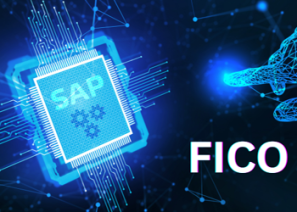SAP TRM Training || SAP TRM certification Training || SAP TRM Online training || SAP TRM self-paced training || SAP TRM Instructor-Led training
Key Features of Training:
- 40 Hrs Instructor-led Training
- Mock Interview Session
- Project Work & Exercises
- Flexible Schedule
- 24 x 7 Lifetime Support & Access
- Certification and Job Assistance
SAP TRM(Treasury and Risk Management):
SAP TRM (Treasury and Risk Management) is a comprehensive module within the SAP ERP system that empowers organizations to efficiently manage their treasury operations and financial risk. It provides a suite of tools and functionalities to optimize cash management, handle various financial instruments, forecast cash flows, and manage liquidity. With SAP TRM, companies can assess and mitigate market risks, such as interest rates, foreign exchange, and commodity price fluctuations, by implementing effective hedging strategies. The module also supports credit risk management, including credit exposure analysis and collateral management. By integrating with SAP Finance and Controlling modules, SAP TRM ensures seamless data flow and compliance with financial regulations and accounting standards. Overall, SAP TRM enables businesses to enhance financial decision-making, safeguard against risks, and maintain regulatory compliance.
Prerequisites: Who can attend SAP TRM Training?
- Basic SAP Knowledge
- Financial Background
- Technical Skills
- SAP Training Level
- Educational Qualifications
- Good Communication Skills
Responsibilities of SAP TRM Consultant:
- Requirement Gathering
- Solution Design
- Implementation and Configuration
- Integration
- Testing
Course Benefits:
- Job opportunities
- Promotion opportunities (Salary Hike)
- Increased productivity:
- Improved decision-making
- Gain in-demand skills
What is future of SAP TRM Consultant?
- Demand for SAP TRM Consultants
- Integration and Cloud Adoption
- Advanced Analytics and Machine Learning
- Regulatory Compliance
- Industry-Specific Expertise
The fee for SAP TRM (Treasury and Risk Management) training can vary depending on several factors such as the location, duration of the course, training format, and level of expertise. SAP offers various training options for TRM, including instructor-led courses, e-learning courses, and virtual live classrooms.
For More details you can Register
SAP TRM(Treasury and Risk Management) Certification FAQ's:
1. What are the prerequisites for obtaining SAP TRM (Treasury and Risk Management) certification?
A: SAP does not have strict prerequisites for TRM certification, but it is recommended to have some foundational knowledge in finance, accounting, and SAP system navigation. Prior experience working with SAP systems or knowledge of other SAP modules can be beneficial, but it is not mandatory.
2. How can I prepare for the SAP TRM certification exam?
A: SAP offers official training courses for the TRM module that can help you prepare for the certification exam. These courses cover various aspects of SAP TRM, including configuration, functionalities, and integration with other modules. Additionally, you can find study guides, practice exams, and other resources from SAP's official website or authorized training partners.
3. Where can I take the SAP TRM certification exam?
A: You can take the SAP TRM certification exam at authorized SAP Training and Certification Centers. These centers are located in various countries and major cities worldwide. You need to register for the exam through the SAP website or contact a local training partner for more information about exam scheduling and availability.
4. What is the format of the SAP TRM certification exam?
A: The SAP TRM certification exam is a computer-based test. It usually consists of multiple-choice questions with different weightage based on the topic's complexity. The duration of the exam can vary, but it typically ranges from 180 to 240 minutes. Please note that the exact format and duration might change, so it's essential to check the latest information on the SAP website or from the training center where you plan to take the exam.
5. How long is the SAP TRM certification valid, and how can I renew it?
A: SAP certifications are generally valid for two years. To keep your certification current, you can participate in relevant training courses or pass a delta exam for the specific module to demonstrate your knowledge of the latest updates. SAP often releases updates and new versions of its software, so staying up-to-date is essential for certification renewal.
6. Is SAP TRM certification recognized globally?
A: Yes, SAP certifications are widely recognized and respected in the global IT and business community. Holding an SAP TRM certification can enhance your career opportunities and demonstrate your expertise in treasury and risk management processes using SAP's software.
7. What are the benefits of becoming a certified SAP TRM consultant?
A: Being a certified SAP TRM consultant can open doors to various career opportunities and consulting engagements with companies using SAP for their financial management needs. Certified consultants are often preferred by employers and clients, as it validates their knowledge and proficiency in the TRM module. Additionally, SAP certifications can lead to higher earning potential and recognition within the SAP community.
8. Can I get a digital badge after completing the SAP TRM certification?
A: Yes, SAP provides digital badges to certified professionals. Digital badges are a visual representation of your achievement that you can display on your online profiles, social media, and resumes. They allow potential employers and peers to verify your certification and skills easily.
9. If I fail the SAP TRM certification exam, can I retake it?
A: Yes, if you don't pass the exam on your first attempt, you can retake it. There might be a waiting period before you can retake the exam, and there could be an additional fee for each attempt. Take the time to review your weak areas, seek further preparation, and try again when you feel confident in your knowledge.
10. Are there different levels of SAP TRM certification?
A: As of my last update in September 2021, SAP TRM certification was available at associate level (C_TRM42_67) and professional level (P_TRM_65). The associate-level certification is designed for individuals with foundational knowledge of SAP TRM, while the professional-level certification is intended for experienced consultants with a deeper understanding of the module. However, please note that SAP regularly updates its certification offerings, and there may be changes or additional levels introduced after my last update.
SAP TRM(Treasury and Risk Management) Certification:
As of our last update in September 2021, SAP TRM (Treasury and Risk Management) certification is a credential offered by SAP to validate the expertise of professionals in the area of treasury and risk management processes using SAP's software solutions. This certification is primarily intended for consultants, business analysts, and professionals who work with SAP TRM module implementations and configurations.
Key points about SAP TRM Certification:
Certification Levels: SAP TRM certification is available at different levels, typically including associate level and professional level. The associate level is suitable for individuals with foundational knowledge of SAP TRM, while the professional level is designed for experienced consultants with a deeper understanding of the module.
Prerequisites: While there are no strict prerequisites for TRM certification, it is recommended to have some background knowledge in finance, accounting, and SAP system navigation. Previous experience working with SAP systems or other SAP modules can be beneficial, but it is not mandatory.
Preparation: To prepare for the certification exam, SAP offers official training courses specifically designed to cover various aspects of SAP TRM, including configuration, functionalities, and integration with other modules. Candidates can also find study guides, practice exams, and other resources from SAP's official website or authorized training partners.
Exam Format: The SAP TRM certification exam is typically a computer-based test with multiple-choice questions. The duration of the exam can vary but is generally several hours long.
Certification Validity: SAP certifications are usually valid for a period of two years. To keep the certification current, certified professionals must participate in SAP Continuing Professional Development (CPD) activities, such as attending relevant training or passing delta exams for the specific module.
Global Recognition: SAP certifications, including SAP TRM, are widely recognized and respected in the global IT and business community. Holding an SAP TRM certification can enhance career opportunities and demonstrate expertise in treasury and risk management using SAP's solutions.
SAP TRM(Treasury and Risk Management) Curriculum:
1. Overview of Treasury and Risk Management in SAP:
- Understanding the role of SAP TRM in financial operations
- Basic concepts and terminology in SAP TRM
2. SAP TRM Cash Management:
- Setting up bank master data and bank account management
- Cash position management and forecasting
- Electronic bank statement processing
- Bank reconciliation
- Cash flow analysis and liquidity planning
3. SAP TRM Market Risk Analyzer:
- Understanding market risk and its importance in financial management
- Market risk measurement and analysis using SAP TRM
- Value at Risk (VaR) calculations
- Managing interest rate risk, foreign exchange risk, and commodity risk
- Hedge management and effectiveness testing
4. SAP TRM Credit Risk Analyzer:
- Introduction to credit risk management
- Credit risk exposure analysis
- Credit risk limit management
- Credit risk simulation and stress testing
- Collateral management
5. SAP TRM Debt and Investment Management:
- Issuance and management of debt instruments
- Investment management and portfolio analysis
- Fair value measurement and hedge accounting
- Hedge accounting for financial instruments
6. Integration with SAP Finance and Controlling:
- Integration of SAP TRM with SAP General Ledger and Financial Accounting
- Integration with SAP Controlling for cost and profit center management
- Impact of SAP TRM on financial reporting and consolidation
7. SAP TRM Configuration and Customization:
- Overview of SAP TRM configuration settings
- Customizing SAP TRM to meet specific business requirements
- Workflows and data migration in SAP TRM implementation
8. SAP TRM Case Studies and Projects:
- Real-world case studies to apply the knowledge gained
- Hands-on projects to implement various aspects of SAP TRM
- Best practices and troubleshooting in SAP TRM projects
SAP TRM(Treasury and Risk Management) Interview Questions and Answers:
1. What is SAP TRM?
A: SAP TRM (Treasury and Risk Management) is a module within SAP that helps manage financial transactions, risk exposures, and treasury-related operations for organizations.
2. What are the key components of SAP TRM?
A: The key components of SAP TRM are Transaction Manager, Market Risk Analyzer, Credit Risk Analyzer, and Portfolio Analyzer.
3. How does Transaction Manager handle financial transactions?
A: Transaction Manager manages financial transactions like money market, foreign exchange, derivatives, securities, etc., enabling users to execute, track, and settle these transactions.
4. What is the role of Market Risk Analyzer in SAP TRM?
A: Market Risk Analyzer calculates market risk metrics like Value-at-Risk (VaR) to assess the potential financial loss arising from market fluctuations.
5. How does Credit Risk Analyzer work in SAP TRM?
A: Credit Risk Analyzer assesses the creditworthiness of counterparties and measures potential credit losses.
6. Explain the functionalities of Portfolio Analyzer in SAP TRM.
A: Portfolio Analyzer allows users to analyze and evaluate the risk and performance of financial portfolios.
7. What are the typical business use cases for SAP TRM implementation?
A: Common use cases include managing cash and liquidity, hedging currency and interest rate risks, credit risk evaluation, and optimizing investment portfolios.
8. How does SAP TRM integrate with other SAP modules?
A: SAP TRM integrates with various SAP modules like SAP FI, SAP CO, and SAP MM to facilitate seamless financial operations.
9. What are the primary data structures used in SAP TRM?
A: Common data structures include Business Partners (Counterparties), Securities, Financial Instruments, Market Data, and Market Risk Factors.
10. How do you define a Deal in SAP TRM?
A: A Deal is a financial transaction that represents a contract between two parties for a specific financial product or instrument.
11. What is the significance of a Master Agreement in SAP TRM?
A: The Master Agreement defines the terms and conditions that apply to multiple deals between the same counterparties, streamlining the contract process.
12. Explain the concept of Hedge Management in SAP TRM.
A: Hedge Management allows users to link hedging instruments with the underlying exposure, ensuring proper risk mitigation.
13. What is the role of Exposure Management in SAP TRM?
A: Exposure Management helps identify and analyze financial risks arising from currency, interest rate, and commodity fluctuations.
14. How does SAP TRM handle Credit Risk Mitigation?
A: SAP TRM supports Credit Risk Mitigation techniques like Collateral Management and Netting to reduce credit risk exposure.
15. What are the important reports in SAP TRM?
A: Common reports include Exposure Reports, Risk Analyzer Reports, Cash Management Reports, and Portfolio Analysis Reports.
16. What is Cash and Liquidity Management in SAP TRM?
A: Cash and Liquidity Management involves optimizing cash positions, forecasting cash flows, and managing bank accounts effectively.
17. How does Hedge Accounting work in SAP TRM?
A: Hedge Accounting ensures compliance with accounting standards for hedging relationships, providing a fair representation of hedge effectiveness.
18. Explain how Market Risk Analyzer calculates Value-at-Risk (VaR).
A: Market Risk Analyzer uses historical market data to calculate the potential loss within a specified confidence interval.
19. What is the importance of Market Data Management in SAP TRM?
A: Market Data Management maintains accurate and up-to-date financial market data required for valuation and risk calculations.
20. How does Treasury Analytics support decision-making in SAP TRM?
A: Treasury Analytics provides real-time insights into financial positions, risk exposures, and portfolio performance, aiding strategic decision-making.
21. Can you define Currency Translation in SAP TRM?
A: Currency Translation converts financial data from one currency to another for reporting and analysis purposes.
22. What is the role of the Market Data Cockpit in SAP TRM?
A: The Market Data Cockpit allows users to manage and maintain market data, including rates, indices, and volatilities.
23. How do you handle Interest Rate Management in SAP TRM?
A: Interest Rate Management involves managing interest rate risk through derivatives, such as Interest Rate Swaps.
24. Explain the concept of Exposure Netting in SAP TRM.
A: Exposure Netting combines offsetting exposures within a group of counterparties or deals to reduce overall risk.
25. What are the differences between Internal and External Hedge Accounting in SAP TRM?
A: Internal Hedge Accounting applies to hedges involving intercompany deals, while External Hedge Accounting applies to hedges with external parties.
26. How does SAP TRM support Compliance and Regulatory Reporting?
A: SAP TRM provides functionalities to comply with various financial regulations and facilitates regulatory reporting.
27. What is the role of Derivative Contract Management in SAP TRM?
A: Derivative Contract Management allows users to create, manage, and settle derivative contracts.
28. Can you explain the process of Cash Flow Management in SAP TRM?
A: Cash Flow Management involves forecasting and optimizing cash flows, ensuring sufficient liquidity for financial operations.
29. How does SAP TRM help in managing Financial Risk?
A: SAP TRM provides tools to analyze and mitigate financial risks, including market risk, credit risk, and liquidity risk.
30. What is the importance of Bank Relationship Management in SAP TRM?
A: Bank Relationship Management streamlines interactions with banks, facilitating efficient cash management and reducing transaction costs.
Participants will have 24/7 access to our online lab, providing hands-on experience with SAP TRM tools and scenarios.
This includes server access to S/4 HANA for 3 months, ensuring you have ample time to practice and apply your skills in a real-world environment.
With this extended access, you can work on projects, explore advanced features, and solidify your understanding of SAP MM in the latest SAP S/4 HANA version.















